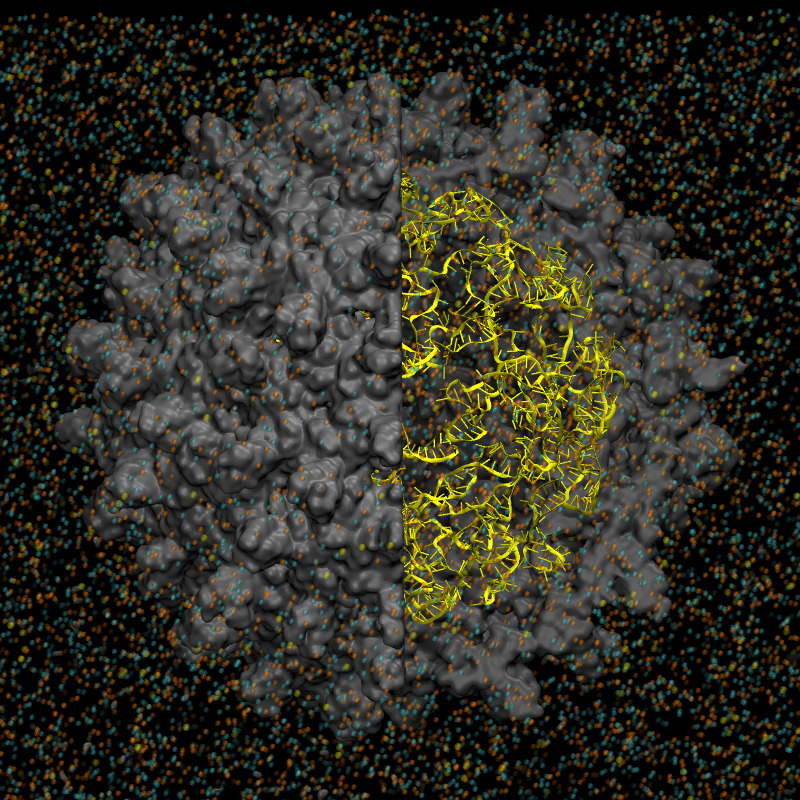Virus Capsid/
Virion ModelingMolecular Simulation
Virus capsid
Modeling of virus capsid on the molecular level is still a quite challenging task because of many unknown factors that contribute to the stability of virus capsid. The virus capsid is one of the targets of our molecular modeling and simulations. Taking the Hepatitis B Virus (HBV) capsid as a target system, we have modeled the entire capsid containing pgRNA. We have simulated the system using both all-atom and coarse-grained force fields to understand the structure, stability, and formation process of the HBV capsid. The extended coarse-grained SPICA force field has been tested for empty capsid of polio virus, too, showing a very stable, rigid structure of the capsid in the CG-MD simulations over a microsecond. HBV capsid containing pgRNA was also successfully simulated by the SPICA force field. The CG-MD was successfully used to investigate the process of adsorption of reverse transcriptase inhibitor, entecavir, into the HBV capsid.
 |
 |
| HBV capsid model in all-atom MD. Capsid proteins are shown in grey and RNA is shown in yellow. | Simulated polio virus capsid by the SPICA force field. |
Virion modeling
HBV particles are generated by budding of preformed cytoplasmic nucleocapsids into endoplasmic reticulum (ER) membranes containing the three viral envelope proteins (L, M, and S). (Bruss and Ganem, PNAS, 1991) Now we are trying to construct a molecular model of the complete HBV virion particle.


